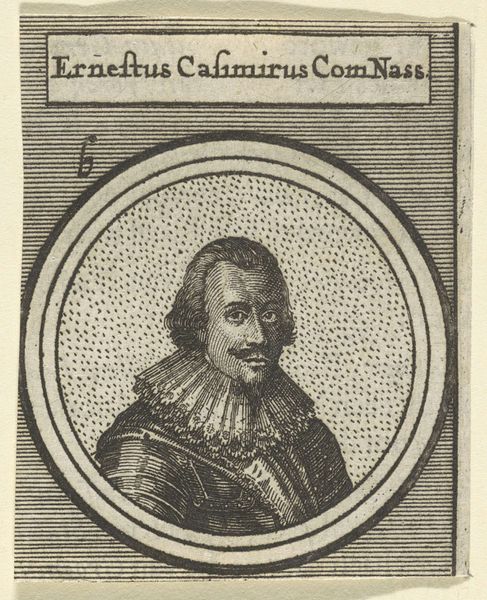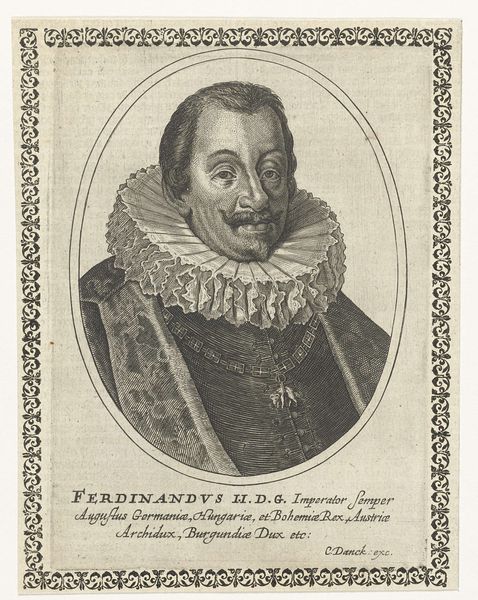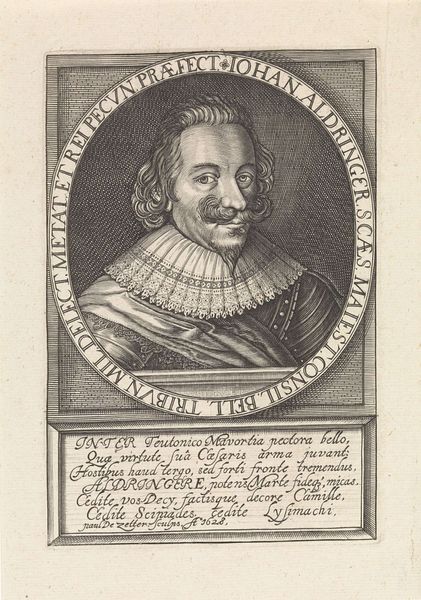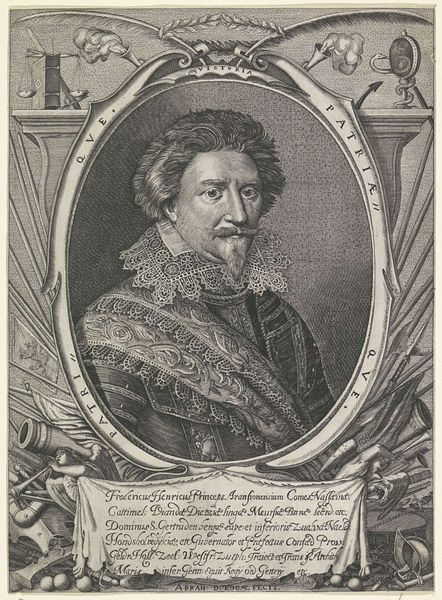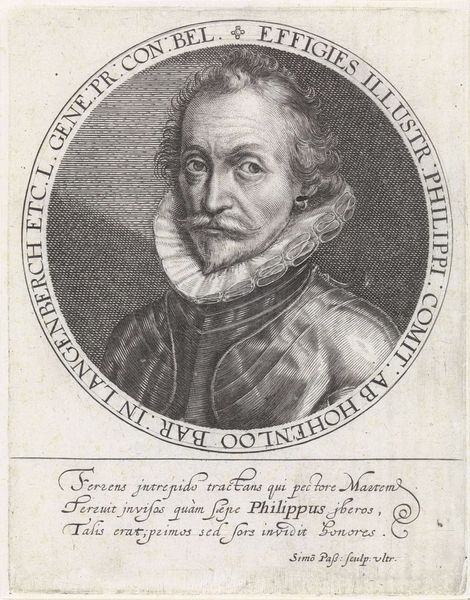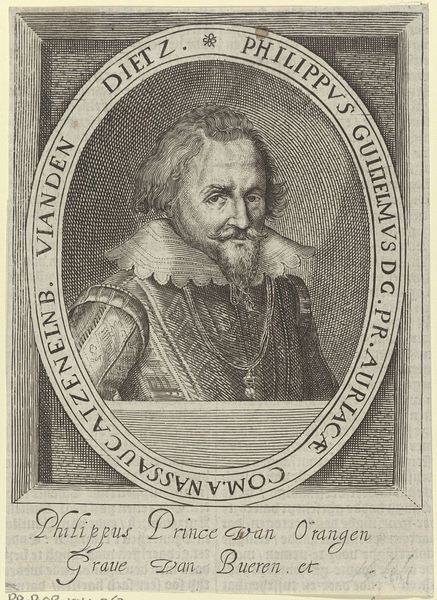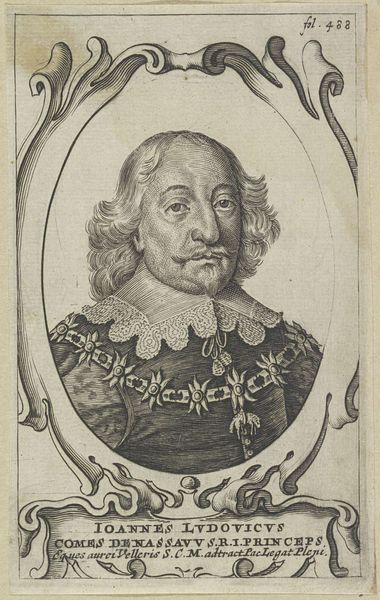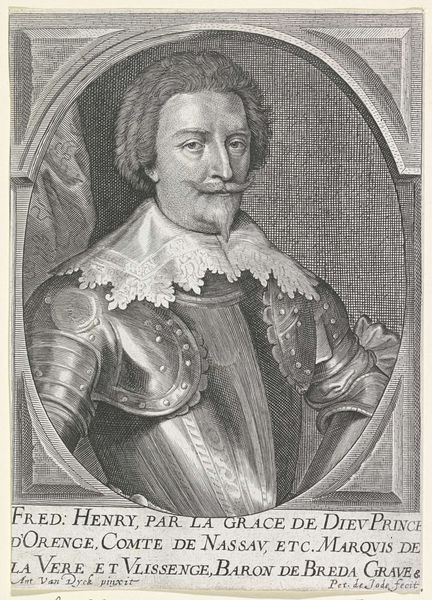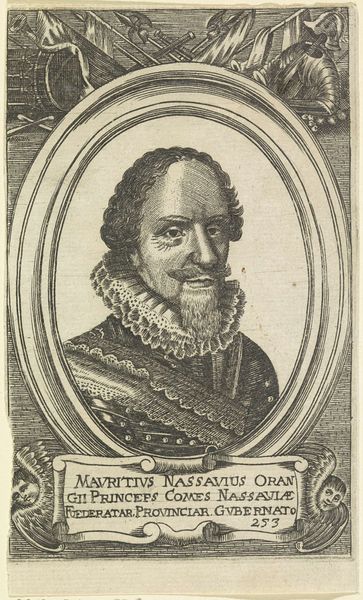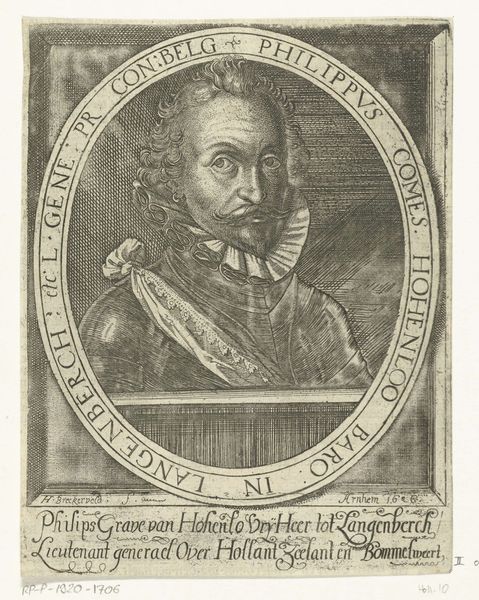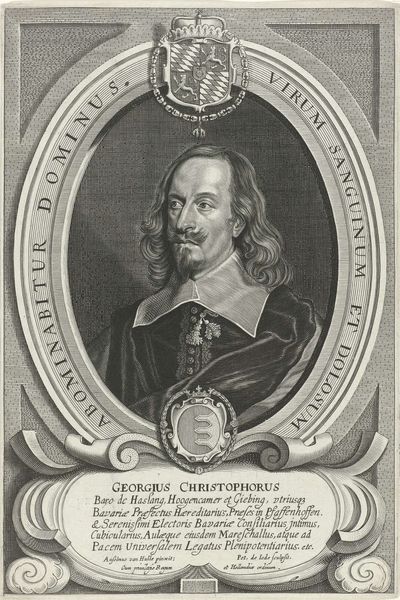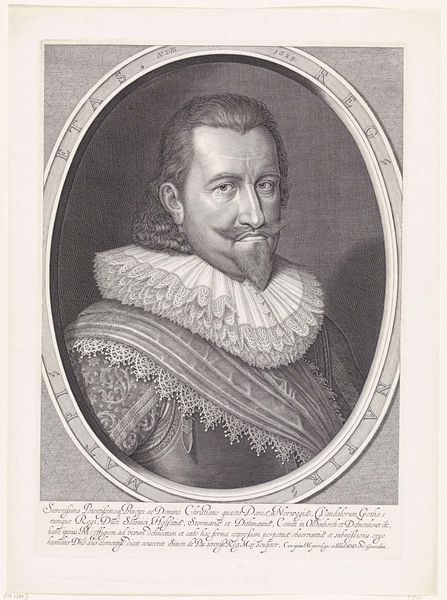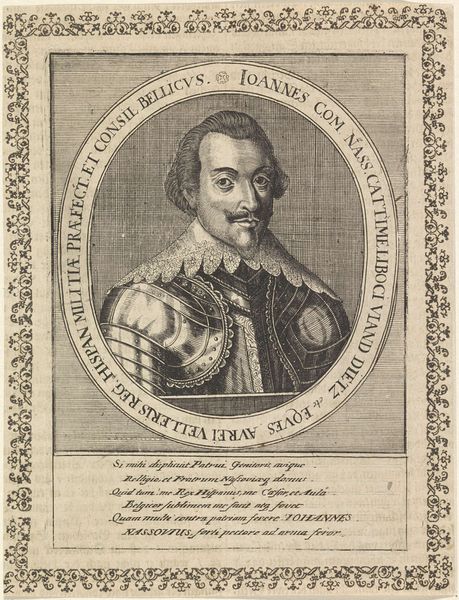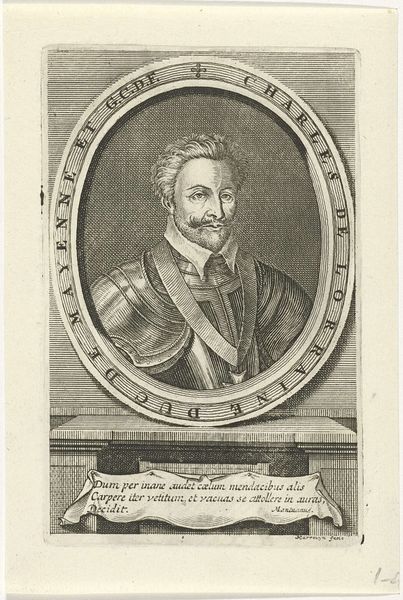
print, engraving
#
portrait
#
baroque
#
dutch-golden-age
# print
#
old engraving style
#
history-painting
#
engraving
#
historical font
Dimensions: height 171 mm, width 131 mm
Copyright: Rijks Museum: Open Domain
Curator: Looking at this engraving, believed to be from the 17th century, we see a portrayal titled "Portret van Ernst Casimir, graaf van Nassau-Dietz". The artist is listed as anonymous, yet the rendering is full of striking detail. Editor: Wow, the intricacy is astounding, especially for something so small. It feels incredibly formal, though; he's really staring into your soul, isn't he? It feels both commanding and somehow slightly melancholic. Curator: Indeed. It is a portrait typical of the Dutch Golden Age, reflecting the influence of the Baroque style. These portraits were often symbolic, meant to convey status, power, and lineage. Ernst Casimir was a Count, after all. Notice the heavy use of text, almost like an illuminated manuscript. Editor: Oh, that ornamental font is fantastic! The frame reminds me of lace, a macabre detail to soften that heavy brow, that uncompromising stare... I love the contrast. There’s so much storytelling woven into every line, a mini historical epic compressed onto paper. But is the purpose really about him? Is this almost symbolic rather than truly about *him*? Curator: It brings up that intriguing dichotomy in portraiture – how much is historical record, and how much is idealized representation? We can use that engraved inscription encircling his head, translating parts to reveal his military ranks, affiliations and regions governed: highlighting not just the individual, but also the weight of responsibility they carried. This adds an important context to the slightly grim mood we discussed. Editor: Definitely! It humanises him a little... makes you wonder about the stories behind that stern face. Overall the picture has the feeling of a monument despite the modest size of the engraving, not a representation. A carefully constructed narrative frozen in time. The old engraving style reinforces that. Curator: Precisely, it's an embodiment of history and cultural memory preserved within an aesthetic that we can appreciate centuries later. The Rijksmuseum houses this print—I invite people to see it in person. Editor: And to let Ernst Casimir, graaf van Nassau-Dietz stare into your very being, connecting with figures, thoughts, and times distant to our own!
Comments
No comments
Be the first to comment and join the conversation on the ultimate creative platform.
